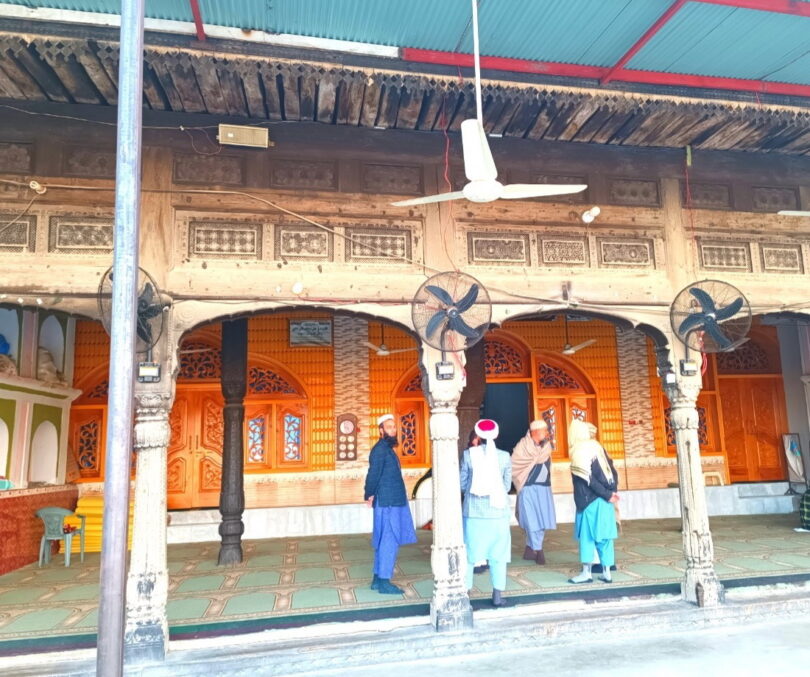Haleem Asad
LOWER DIR: The Mian Kalay Jandol elders have demanded the Khyber Pakhtunkhwa government and high ups of the Auqaf and Religious affairs’ department to declare the Mian Kalay Jandol wooden Loi Masjid (large mosque) as a national heritage and take measures for its preservation.
Talking to this reporter during a visit to the mosque, the area elder Bakht Rawan, 80 said the Loi Masjid was built some 206 years ago during the reign of Ghazi Umra Khan (also known as the Afghan Napoleon).
He said that the wooden and historical mosque was hidden from the government and visitors because Mian Kalay in Jandol was no more famous. He said that Mian Kalay, once like the famous Qissa Khwani bazaar in Peshawar, was famous for trade as caravans from Afghanistan, Russia, China and India stayed here and exchanged their goods. The elder said that Mian Kalay at that time was a trade center and had great importance in the region.
The Jandol area of Lower Dir has witnessed many rise and fall because it was ruled by various dynasties but Ghazi Umra Khan (1860-1904) made it a modal state on the basis of his wisdom, love and strength.
The elders said the prayers’ hall was first built by Mansoor Ahmad Jan, one of the Sahibzadagan elders of Jandol some 206 years ago while the verandah was made some 175 years ago during the rule of Ghazi Umra Khan. The mosque has been built of fine wood imported from Afghanistan and other border areas of the then Dir State. It presents a wonderful look as fine wood has been used in walls, pillars, beams, doors, windows, ceiling and cupboards with different designs. The wooden pillars and ceiling have been decorated with designs of Mughal-era Islamic architecture that holds a fascination for visitors.
“It is a Jamia Masjid and more than 1000 worshippers come to offer Friday prayer here,” said the mosque’s imam, adding that a local mosque committee had been tasked to look after its affairs. Another elder said that skilled craftsmen and carpenters were brought from Peshawar at that time who were paid Rs 2.50 as wage per day. A local journalist Noor Zaman said the mosque was a unique piece of hard work. “It is a wonderful construction and today’s engineers are also stunned when they watch it,” he remarked.
He said that due to the increase in population, the space of the mosque became less and the prayers’ hall was re-built in a modern architectural style to expand it. He said the verandah was left in its old original condition for the sake of its historical importance. “The mosque can be better preserved if the Auqaf department takes care of it and declares it a national heritage,” he added.







